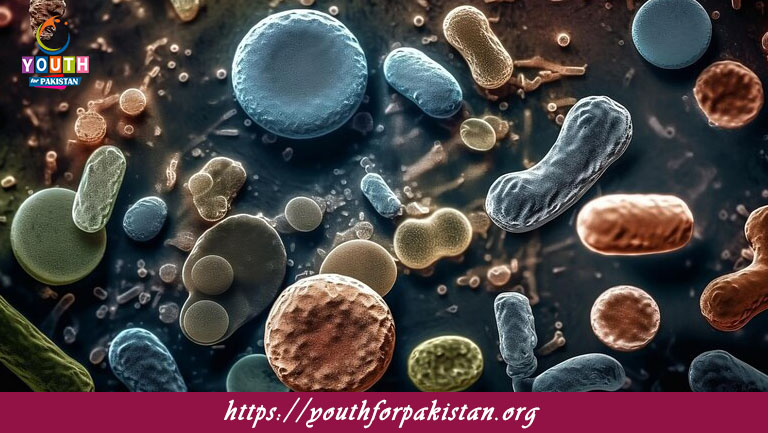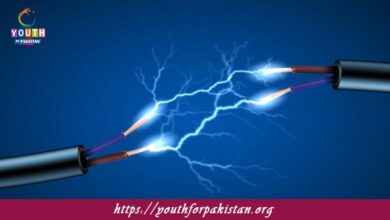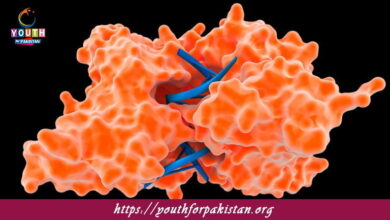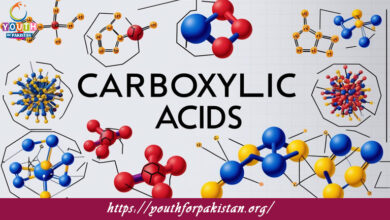Prokaryotes MDCAT MCQs with Answers

Welcome to the Prokaryotes MDCAT MCQs with Answers. In this post, we have shared Prokaryotes Multiple Choice Questions and Answers for PMC MDCAT 2024. Each question in MDCAT Biology offers a chance to enhance your knowledge regarding Prokaryotes MCQs in this MDCAT Online Test.
The absence of which structure is a defining feature of prokaryotes?
a) Nucleus
b) Ribosomes
c) Cytoplasm
d) Plasma membrane
Prokaryotic DNA is located in which part of the cell?
a) Mitochondria
b) Nucleoid
c) Golgi apparatus
d) Chloroplast
Which of the following is an example of a prokaryotic organism?
a) Amoeba
b) Fungi
c) Bacteria
d) Algae
Which of the following structures is not present in prokaryotic cells?
a) Ribosome
b) Cell wall
c) Mitochondria
d) Plasma membrane
Prokaryotic ribosomes have a size of:
a) 70S
b) 80S
c) 60S
d) 90S
Which process do prokaryotes use to reproduce?
a) Binary fission
b) Mitosis
c) Meiosis
d) Budding
The genetic material in prokaryotes is:
a) Linear DNA
b) Circular DNA
c) DNA with histones
d) Chromatin-bound DNA
Which of the following is a characteristic of prokaryotes?
a) Membrane-bound organelles
b) Multicellularity
c) Lack of true nucleus
d) Sexual reproduction
Which type of RNA polymerase is found in prokaryotes?
a) RNA polymerase I
b) RNA polymerase II
c) RNA polymerase III
d) A single RNA polymerase
Prokaryotic cell walls are primarily made of:
a) Chitin
b) Cellulose
c) Peptidoglycan
d) Phospholipids
Which of the following structures is used by prokaryotes for movement?
a) Flagella
b) Cilia
c) Pseudopodia
d) Microtubules
What is the primary function of plasmids in prokaryotes?
a) Protein synthesis
b) Carrying antibiotic resistance genes
c) Energy production
d) Structural support
Which of the following is absent in prokaryotic cells?
a) Ribosomes
b) Endoplasmic reticulum
c) Cell membrane
d) DNA
The region where the prokaryotic chromosome is located is called:
a) Nucleus
b) Nucleoid
c) Nucleoplasm
d) Nuclear envelope
Which of the following organisms is classified as a prokaryote?
a) Paramecium
b) Cyanobacteria
c) Fungi
d) Protozoa
What is the main source of energy production in prokaryotic cells?
a) Mitochondria
b) Plasma membrane
c) Nucleoid
d) Ribosomes
Which structure in prokaryotes is responsible for protein synthesis?
a) Nucleoid
b) Ribosomes
c) Flagella
d) Golgi apparatus
Which staining technique is used to differentiate bacterial cell walls?
a) Gram staining
b) Acid-fast staining
c) Simple staining
d) Negative staining
Which term describes the transfer of genetic material between prokaryotic cells via a pilus?
a) Transduction
b) Transformation
c) Conjugation
d) Binary fission
What are small, circular DNA molecules in prokaryotes called?
a) Chromosomes
b) Plasmids
c) Histones
d) Nucleosomes
Which type of bacteria has a thick peptidoglycan layer and stains purple in Gram staining?
a) Gram-negative bacteria
b) Gram-positive bacteria
c) Acid-fast bacteria
d) Spirochetes
The process in which bacteria take up foreign DNA from their environment is called:
a) Transformation
b) Conjugation
c) Transduction
d) Transcription
Which structure helps prokaryotes adhere to surfaces?
a) Flagella
b) Pili
c) Cilia
d) Endospore
What term describes a dormant, tough, and non-reproductive structure formed by some prokaryotes?
a) Cyst
b) Spore
c) Endospore
d) Pilus
Which type of gene transfer involves viruses transferring DNA between prokaryotes?
a) Conjugation
b) Transformation
c) Transduction
d) Binary fission
The outermost layer of prokaryotic cells that provides protection is called the:
a) Cell membrane
b) Cell wall
c) Capsule
d) Nucleoid
The function of the prokaryotic cell wall is to:
a) Synthesize proteins
b) Provide structural support
c) Produce energy
d) Store nutrients
Which of the following is NOT true about prokaryotic cells?
a) They lack a nucleus
b) They contain 80S ribosomes
c) They reproduce by binary fission
d) Their DNA is circular
The genetic material of prokaryotes is not enclosed in a:
a) Cell membrane
b) Nuclear envelope
c) Cell wall
d) Plasma membrane
Prokaryotes lack which of the following structures?
a) Cytoplasm
b) Golgi apparatus
c) Ribosomes
d) Plasma membrane
What structure is responsible for the transfer of genetic material between bacterial cells?
a) Endospore
b) Flagella
c) Pilus
d) Cell wall
Which structure serves as the site of DNA replication in prokaryotes?
a) Nucleus
b) Nucleoid
c) Ribosome
d) Flagella
Which of the following is an example of a prokaryotic autotroph?
a) Escherichia coli
b) Cyanobacteria
c) Paramecium
d) Yeast
The term “prokaryote” refers to cells that:
a) Lack a cell membrane
b) Lack a nucleus
c) Lack ribosomes
d) Lack cytoplasm
Which of the following is an example of extremophiles in prokaryotes?
a) Cyanobacteria
b) Halophiles
c) Paramecium
d) Amoeba
Which structure in prokaryotes is responsible for the selective transport of molecules?
a) Ribosome
b) Cytoplasm
c) Plasma membrane
d) Nucleoid
Which of the following bacteria is known for its role in nitrogen fixation?
a) Escherichia coli
b) Rhizobium
c) Staphylococcus
d) Bacillus
Which of the following is involved in the synthesis of proteins in prokaryotic cells?
a) Flagella
b) Pili
c) Ribosomes
d) Plasma membrane
Prokaryotes that can survive in extreme conditions, such as high temperatures, are called:
a) Mesophiles
b) Halophiles
c) Extremophiles
d) Psychrophiles
If you are interested to enhance your knowledge regarding Physics, Chemistry, Computer, and Biology please click on the link of each category, you will be redirected to dedicated website for each category.





